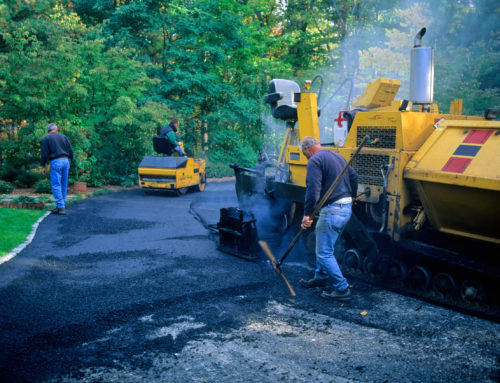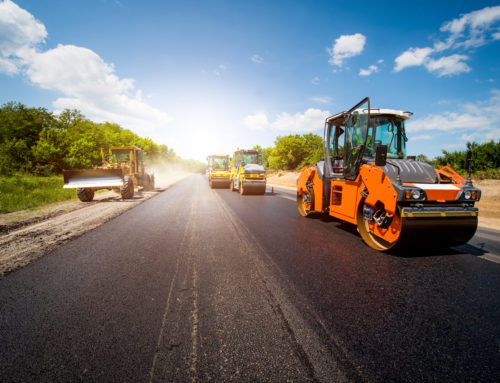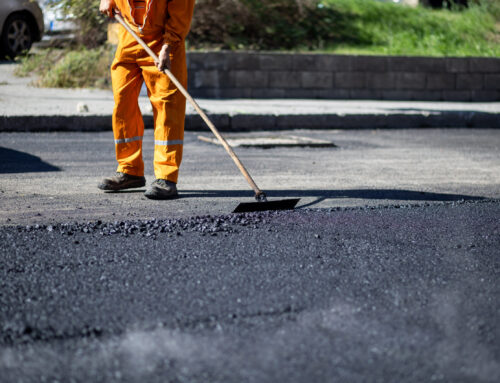In the realm of asphalt paving, where every project comes with its unique challenges, few scenarios test the resilience of infrastructure in extreme environments. From the blistering heat of deserts to the icy landscapes of polar regions and the unpredictable nature of disaster-prone areas, paving in extreme climates requires innovative solutions and meticulous planning. In this blog, we’ll discuss the challenges faced and the specialized solutions employed when asphalt paving encounters the harshest conditions nature offers.
Challenges of Asphalt Paving in Extreme Environments
1. Desert Challenges: Battling the Heat
Desert environments present a scorching challenge for asphalt pavements. The intense heat can lead to premature aging, cracking, and rutting. Conventional asphalt mixes may struggle to withstand extreme temperatures, necessitating the development of specialized mixes that incorporate polymers and additives for increased durability and flexibility. Moreover, careful consideration of the timing of construction, such as night paving to avoid peak daytime temperatures, is crucial in desert regions.
2. Polar Extremes: Tackling Frigid Temperatures
Polar climates, characterized by freezing temperatures and ice accumulation, pose a starkly different set of challenges. The extreme cold can make asphalt surfaces brittle, leading to cracking and reduced flexibility. Specialized cold-mix asphalt formulations with modified binders ensure the pavement remains pliable even in sub-zero temperatures. Proper compaction during installation also becomes even more critical in these frigid environments.
3. Natural Disasters: Paving with Resilience
Areas prone to natural disasters, such as earthquakes or floods, require a different approach to asphalt paving. Traditional asphalt may not withstand the ground movements associated with earthquakes, prompting the use of innovative materials like fiber-reinforced asphalt to enhance structural integrity. For flood-prone regions, porous asphalt can aid in water drainage, preventing water buildup and reducing the risk of damage during and after heavy rainfall.
4. High-Wind Zones: Anchoring Asphalt in Storms
In regions susceptible to high winds, like hurricane-prone coastal areas, the challenge lies in preventing asphalt surfaces from becoming projectiles during storms. Using strong aggregate mixes and proper anchoring techniques, such as deep asphalt bases or grid reinforcements, can help secure the pavement against strong winds. Additionally, quick response and repair post-storm are vital to prevent further damage.
5. Altitude Considerations: Adjusting for Thin Air
Asphalt paving in high-altitude environments presents unique challenges due to lower air pressure and reduced oxygen levels. The thinner air can affect the curing process of asphalt mixes, requiring adjustments in the formulation and compaction processes. Special attention to mix design, temperature control during paving, and adequate compaction efforts are essential at higher elevations.
6. Adapting to Climate Variability: Dynamic Solutions
In regions with extreme climate variability, the challenge lies in creating flexible pavements that can adapt to drastic temperature fluctuations. Polymer-modified asphalt mixes are designed to provide increased elasticity, allowing the pavement to expand and contract without compromising structural integrity. This adaptability is crucial in areas where temperature differentials between seasons are extreme.
7. Innovations in Materials: Paving the Future
The challenges of extreme environments have spurred innovations in asphalt materials. Researchers and engineers are exploring advanced additives, nano-materials, and self-healing technologies to create pavements that can repair themselves under stress. These cutting-edge materials aim to enhance the durability and longevity of asphalt surfaces in extreme conditions.
Asphalt paving in extreme environments demands a nuanced understanding of the challenges posed by nature’s extremes. From searing heat to bone-chilling cold and the unpredictability of natural disasters, engineers and paving professionals continually evolve their strategies and materials to meet these challenges head-on.
The future of asphalt paving in extreme climates lies in the continued development of resilient materials and innovative construction techniques. As we push the boundaries of what’s possible, one thing remains clear: the marriage of human ingenuity and asphalt technology will continue to pave the way for robust and enduring infrastructure, even in the harshest corners of our planet. In Tucson, Sunrise Asphalt will always be at the forefront of paving!





